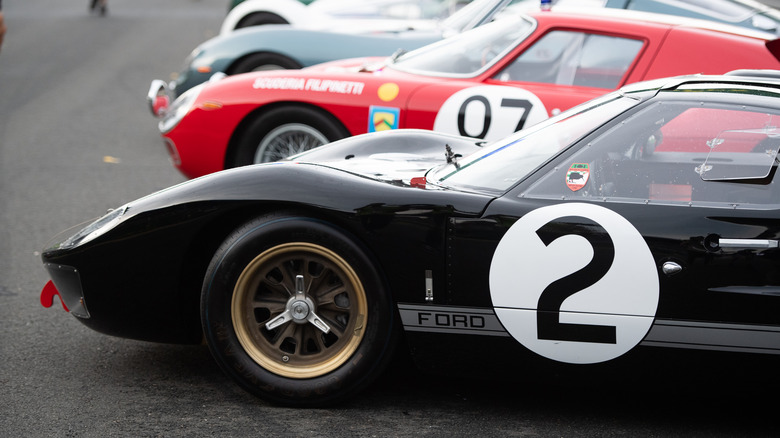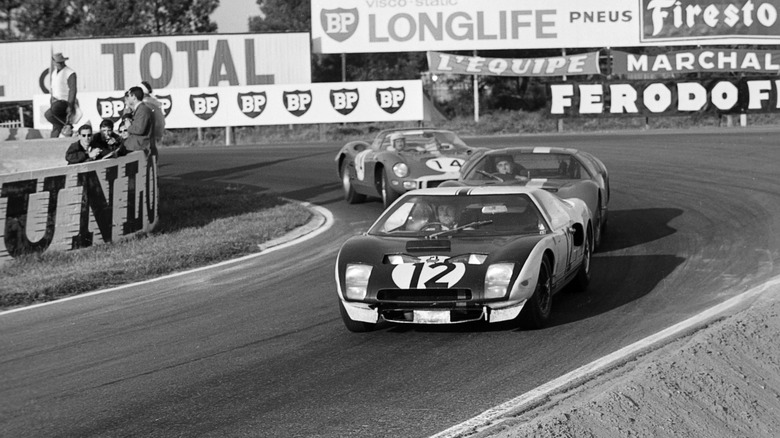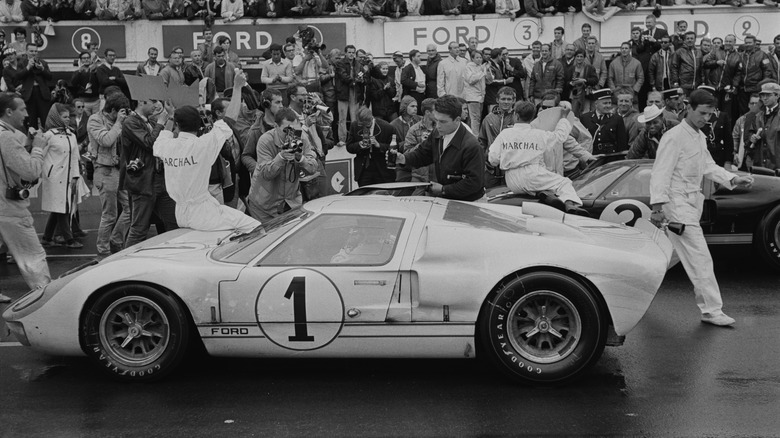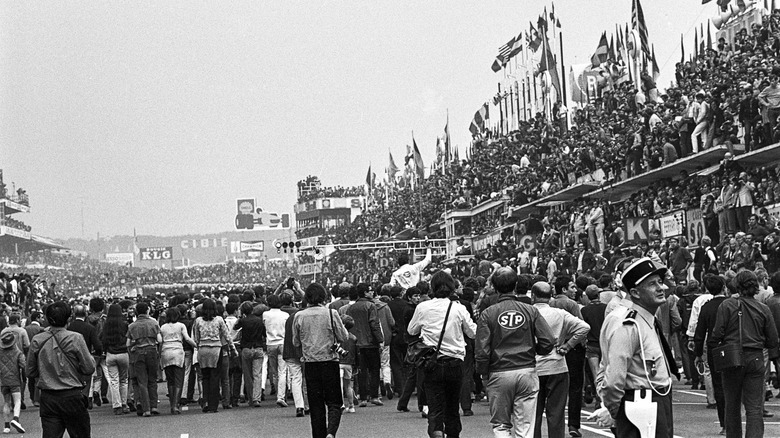3 Of Ford's Best Years At Le Mans
It's a testament to how great Ford's handful of successful years at Le Mans were, that we tend to overlook all the years they weren't, as well as the decades they didn't field a car at all. The legendary wins forever changed the public's perception of a brand once associated with accessible, consumer cars. But dominating at Le Mans for a few years changed the way the public saw Ford for decades.
The story behind it is familiar to anyone who read the book, saw the movie, or knew about it already because they're a seasoned racing fan. Henry Ford II sought to purchase Ferrari as he understood that winning races isn't just good for the driver, it helps car sales too. He sent his seconds to court Enzo, who seemed to be interested until he picked up his Ferraris and went home. That slight against Ford spurred the creation of the GT40, which went on to win four of the races in one of the better examples of revenge.
1964 failures laid the foundation for victory
On the surface 1964 seems like a pretty bad year for Ford at Le Mans. Two of the cars suffered gearbox issues, and one of them caught fire, all of which are understandable reasons why none of the Fords entered finished the race. It may have been difficult to see the bright side immediately afterward, but these failures on their first outing at Le Mans laid the foundation for future success.
What Ford demonstrated was an early promise of speed that showed their rivals what was possible. The 4.2-litre, V8-powered GT40s initially stormed past the Ferraris and built a commanding lead, and one of the Fords driven by Phil Hill and Bruce McLaren set a lap record. Tweaks were clearly needed, and 1964's failures precipitated the biggest tweak of all: giving control of the racing division to Carol Shelby, whose Shelby Daytona Coupe with a 4.7L Ford engine finished fourth in the same race.
The 1966 1-2-3 finish
Obviously, no list of Ford's best years at Le Mans would be complete without mentioning the infinitely photogenic 1-2-3 finish of Ford cars in 1966. It took the long-held dream to triumph against Ferrari and dominate at Le Mans and crystalized it into a highly marketable image that looked like the racing version of a graduation ceremony. As Ford excitedly described in a press release at the time, the "winning car covered more miles (3,009.3) at a faster speed (125.38 mph) than any previous entry. It demonstrated that production engines could compete with racing power plants and that an American-built car could top Europe's best."
The message to the racing world was sent and photographed, and the fact that it was done by a company with seemingly endless financial resources didn't undermine the achievement. What did, as people know, is that the photo op meant that driver Ken Miles was prevented from becoming the first person to win Daytona, Sebring, and Le Mans in the same year, since it was decided that Ford drivers McLaren and Amon were the winners, having started the race further back. But you can't see that in the picture, and it's a stunning victory regardless.
1969 and winning one last time
A win often evolves into a dynasty when it's done repeatedly over the years, especially as competition is beginning to catch up to your innovations. The 1969 victory by Ford drivers Jacky Ickx and Jackie Oliver was not a likely one, as Ickx knew that other cars like the Porsche 908 were faster. It's why numerous Porsches held the lead for most of the race. But a move on a tight bend propelled Ickx to a mere 100-yard victory, sealing off Ford's four years of domination in what would be the last Le Mans they'd compete in for decades, not returning until 2016.
While 1964, 1966, and 1969 were key moments in the story of Ford's racing legend, any of their other interim years at Le Mans can lay claim to equal greatness, and you wouldn't go wrong choosing them instead. A perceived slight seemingly set off years of racing victories, and one can hopefully assume it all helped Henry Ford II get over it.



